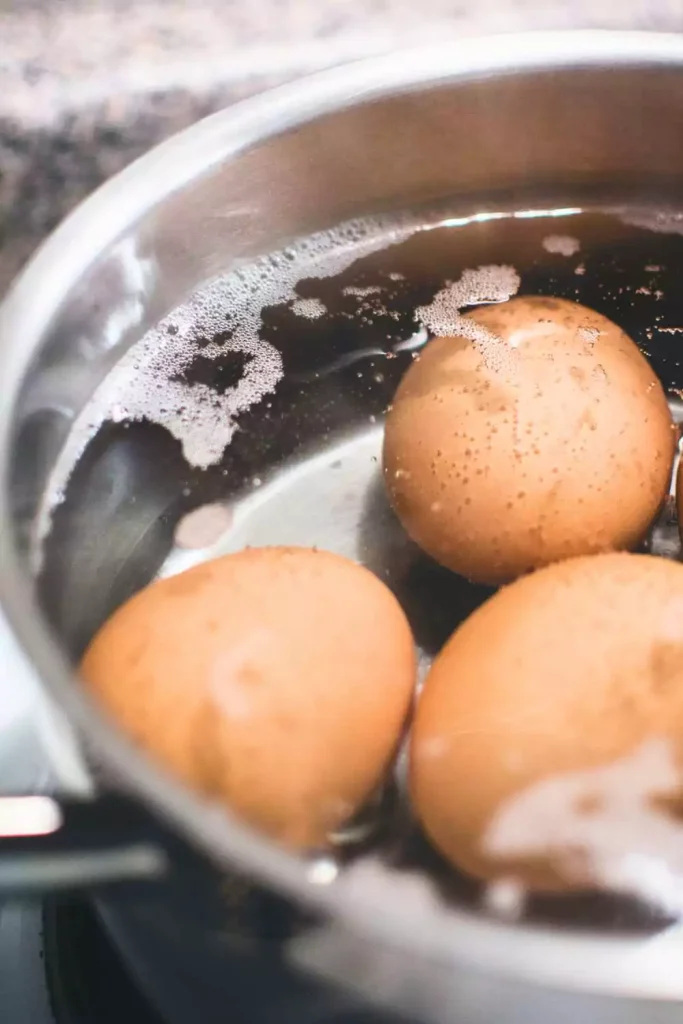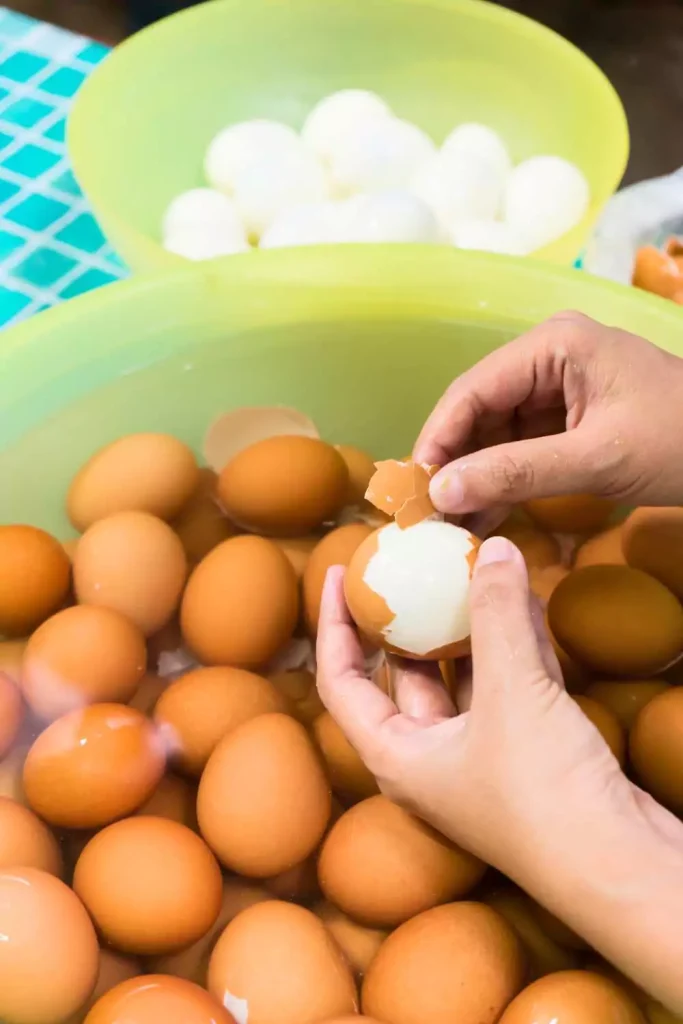Boiling eggs should be easy. But somehow, they crack, they’re hard to peel, or you get that weird green ring around the yolk that makes them look like they’ve been sitting out since 1992.
Mastering the boiled egg isn’t about being fancy—it’s about getting consistent, peelable, delicious results every single time.
If you’re making egg salad or just trying to avoid another overcooked breakfast, a good boiled egg is all about four simple things: egg age, method, timing, and cool-down. Let’s crack it open (pun fully intended).
Best Basic Method (Cold‑Start + Ice Bath)
1. Use Slightly Older Eggs
Here’s a tip no one tells you: Fresh eggs are harder to peel. If your eggs came straight from the farm or fridge, they’ll cling to the shell like a toddler to a mom’s leg.
Use eggs that are about 7–10 days old.
As eggs age, their pH changes, which makes the shell release more easily after cooking. So if you’re planning ahead, buy eggs now, boil them next week.
2. Place Eggs in Pot, Cover with Cold Water
Don’t dump them into boiling water like a wild animal. Lay your eggs gently in a saucepan and cover them with cold water—about 1 to 2 inches above the eggs.

Starting cold helps the eggs heat gradually, reducing the risk of cracking from the shock of hot water. Think of it as a gentle wake-up, not a boiling alarm clock.
3. Bring to a Rolling Boil (Uncovered)
Crank up the heat and let the water come to a good rolling boil—not just a lazy simmer.
No need to cover the pot yet. Watch closely (or set a timer if you’re like me and forget you were even boiling eggs in the first place). Once it’s boiling, it’s go time.
4. Turn Off the Heat, Cover, and Time It
As soon as that water hits a full boil, turn off the heat, slap a lid on the pot, and move it off the hot burner if needed.
Now, set your timer depending on how you want your yolk (see table below). This is the magic move that keeps them from overcooking and getting that sad, chalky yolk.
5. Immediate Ice Bath for 10–15 Minutes
The moment your timer beeps, get those eggs into an ice bath—just a bowl with cold water and ice cubes.
Let them chill out for 10 to 15 minutes.
This stops the cooking instantly and makes them way easier to peel later. Don’t skip this. It’s the difference between “easy breakfast” and “peeling for 12 years.”
6. Peel Under Running Water
Peeling eggs is half science, half art, and a little bit of luck. Gently crack the shell all over, roll it on the counter, and peel it under cold running water.
That water gets under the membrane and helps it slip off. Still having trouble?

Try the bowl-shake method—place a few eggs in a bowl with a bit of water, cover, and shake. It’s oddly satisfying and works surprisingly well.
Cooking Times & Yolk Texture
| Doneness | Total Hot‑Water Time | Yolk Texture |
|---|---|---|
| Soft-boiled | 4 min | Runny |
| Medium / Jammy | 6–8 min | Creamy, slightly soft center |
| Hard-boiled | 10–14 min | Fully set, slightly dry if too long |
Note: These times are based on large eggs straight from the fridge.
Alternative Methods
Want to experiment? Here are a few solid alternatives that get love online:
- Steaming – Place eggs in a steamer basket above boiling water, lid on. Steam for 12–15 minutes. Many say this method makes peeling even easier.
- Pressure Cooker / Instant Pot – Try the 5‑5‑5 method: 5 minutes on high pressure, 5 minutes natural release, 5 minutes in an ice bath. Super consistent if you’re into gadgets.
- Oven or Air-Fryer – Yep, some people “bake” their eggs. Place eggs in a muffin tin, bake at 325°F (160°C) for 25–30 minutes. Ice bath afterward. Great for big batches.
Peeling Techniques
No one wants to spend 10 minutes fighting a stubborn shell. Here’s how to win the battle:
- Crack and soak – Tap the egg all over, let it sit in cold water for a minute.
- Peel under running water – Helps lift the membrane.
- Shake in a bowl – Place 3–4 eggs in a bowl with an inch of water, cover, and shake gently. The shells practically fall off.
Bonus tip: If the shells still stick, your eggs might’ve been too fresh. Now you know for next time!
Food Safety & Storage
Boiled eggs are fridge-friendly for up to 7 days. Leave them unpeeled for better freshness. Once peeled, eat within a day or two.
Want to be extra safe? Make sure your eggs reach at least 74°C (165°F) internally to kill any bacteria. Most home methods hit that just fine, especially hard-boiled ones.
Conclusion
Here’s the method for boiling eggs perfectly:
- Cold water start
- Bring to boil → turn off heat → cover → set timer on
- Ice bath for 10–15 min
- Peel under water or shake for easy removal
Boiling eggs doesn’t have to be complicated or frustrating. With this method, you’ll get consistent results without mystery cracks, green yolks, or peeling rage. You’ve got this.